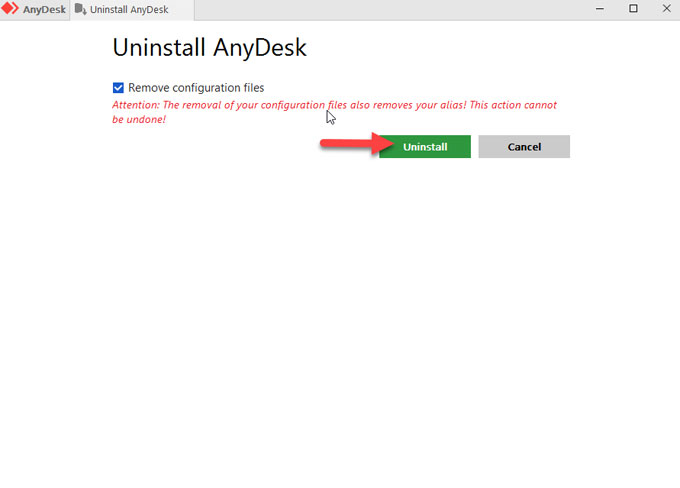Translating Keyboard Inputs
For international users connecting from one language zone to another, AnyDesk has a feature for translating the keyboard layout.For example a user in Poland using a polish keyboard layout can connect to a machine in France which is using a french keyboard layout and work regardless of the different keyboard layouts.In most cases there is no need for user interaction with the keyboard setting. Only in some cases it is necessary to manually choose the keyboard translation mode.
Discover AnyDesk, the secure & intuitive remote desktop software, and take advantage of the application's innovative features! AnyDesk is a simple remote desktop software tool that can be used to instantly connect to other computers using a simple ID and password. Similar choice › Untiled auto desk 3ds max 9 for pc.
Automatic
This setting enables 1:1 mode if the keyboard layouts on both machines partaking in the session are the same and enables translation mode if the keyboard layouts differ. The setting is automatically detecting keyboard layout changes of the operating system. If you encounter problems with certain programs, please try to select a keyboard mode manually.
1:1 mode
In 1:1 mode, all keys are mapped from the local to the remote keyboard based on their position. For example, the key q on a english keyboard (qwerty) will insert the character a if connected to a machine with a french keyboard layout (azerty). This mode is not feasible for office work but it can be useful when playing games which depend on the exact location of a key.
Auto-Translate Mode
When auto-translate mode is active, all keys will be transmitted to the remote side as if the local keyboard layout would be active on the remote side. This mode might cause problems with certain programs (for example video games), because these programs process the exact key position (scancode).
Keyboard Shortcuts

Note:
Keyboard shortcuts (e.g. copy/paste) have to be used with the keys that are valid on the remote device's operating system.For example copy on MacOS with CMD+C, but paste on Windows with CTRL+V.
AnyDesk can be controlled using several key combinations.
Hotkeys (Windows-only)
To invoke a command, hold the keys ctrl+alt+shift at the same time and then press one of the following keys:
| Key | Function |
|---|---|
1..9 | Select tab [number pressed] |
Return or F11 | Toggle full-screen mode |
C | Open chat menu |
S | Toggle sound transmission |
I | Toggle input state (allow/disallow input) |
P | Save screenshot |
M | Show/hide mouse cursor |
F2 | View Mode - Default(1:1 Pixel) |
F3 | Select view mode 'shrink' |
F4 | Select view mode 'stretch' |
Del | Send CTRL+ALT+DEL |
Left/Right Arrow | Iterate between remote monitors |
NUMPAD 1..9 | Switch to a specific remote monitor |
For example, to log on to a remote machine you can simply press ctrl+alt+shift+del.
Mouse Shortcuts
Double clicking a monitor tab switches to full screen mode.
ID & Alias

Each AnyDesk has a unique numerical ID to identify in the AnyDesk network. A readable Alias can be assigned to that ID. Both represent an address to the device.

The allowed characters are: numbers 0-9, letters a-z, A-Z, and symbols: minus(-), dot(.), and underscore(_). All other characters are forbidden and regarded as invalid.
Individual Namespaces
Customers with a Professional or Power License have the option to additionally acquire their own individual namespace (you@yourcompany). This allows for the ability to change the aliases that are registered to this namespace without any limit.
Also, you can use your namespace when setting up your client’s Access Control List.
In order to purchase your own namespace, please reach out to our Sales Team or upgrade your license by yourself on MyAnyDesk Portal by clicking the 'Upgrade!' button.
.jpg)
Assign or Change the Alias
Free license: Users with a free-license set the alias once. The alias will be bound to the corresponding ID and cannot be altered or reassigned.
Lite / Professional / Power license with a public namespace (you@ad): Users can change a chosen alias up to three times on [my.anydesk.com], always depending on whether this public alias is not yet taken by any other user in the AnyDesk network. The alias can be changed but not reassigned.
Professional / Power license with an individual namespace (you@yourcompany): Users can change or reassign the alias for all clients on [my.anydesk.com] without limit.
Enterprise: With an individual or public namespace (you@yourcompany or you@ad) users can change or reassign the alias for all clients on [my.anydesk.com]. They are not limited in how often they change it or which aliases to choose, even with the public namespace, as they are working within their own private network.
For all licenses: ID and alias are stored in the configuration file service.conf.If the configuration files get lost by any means, the ID and Alias will be lost. If the configuration file is not manually restored, this action cannot be undone. (See 'Backup & Restore Settings and ID' below.)
Anydesk Pc App Download
Backup & Restore Settings and ID
Warning: If the configuration files get lost by any means, the ID and Alias will be lost.If the configuration file is not manually restored, this action cannot be undone.
Some cases require you to backup the ID. In case you have a new device to use AnyDesk with, copy the configuration files in order to use the ID on the new system. The directory of the configuration files depends on whether you have installed AnyDesk or run it portable. The ID is stored in the service.conf.Uninstallation will not touch or delete your ID or configuration files, except explicitly requested in the uninstallation menu.
To backup your identity, save the service.conf' in a secure location. This enables you to retrieve your Identity in case of data loss. To secure settings and recent session list with it, copy the entire folder:
| Windows 7 and later | Portable: | %appdata%AnyDesk |
|---|---|---|
| Installed: | %programdata%AnyDesk | |
| Windows XP/Server 2003 | Portable: | %appdata%AnyDesk |
| Installed: | %AllUsersProfile%AnyDesk | |
| macOS | local user: | ~/.anydesk/service.conf |
| service (default): | /etc/anydesk/service.conf | |
| Linux | local user: | ~/.anydesk/service.conf |
| service (default): | /etc/anydesk/service.conf | |
| Before Android 7.0 and AnyDesk 5.3.4 | Default: | root/data/data/com.anydesk.anydeskandroid/files/.anydesk/service.conf |
| Since Android 7.0 and AnyDesk 5.3.4 | Credential encrypted storage (CE): | root/data/user/0/com.anydesk.anydeskandroid/files/.anydesk/service.conf |
| Device encrypted storage (DE): | root/data/user_de/0/com.anydesk.anydeskandroid/files/.anydesk/service.conf |

Cloned operating system - ISO
Anydesk Remote Control Pc
Delete the service.conf on one of these systems and restart AnyDesk to get a new ID. In this way, both machines will have a unique ID.Hence both devices can be connected to. Use this technique to deploy/rollout images of your OS with AnyDesk pre-installed:
Anydesk App Pc
- Create an OS installation.
- Install AnyDesk.
- Exit AnyDesk completely.
- Delete the service.conf file in %programdata%AnyDesk.
- Create the image for rollout/deployment.
